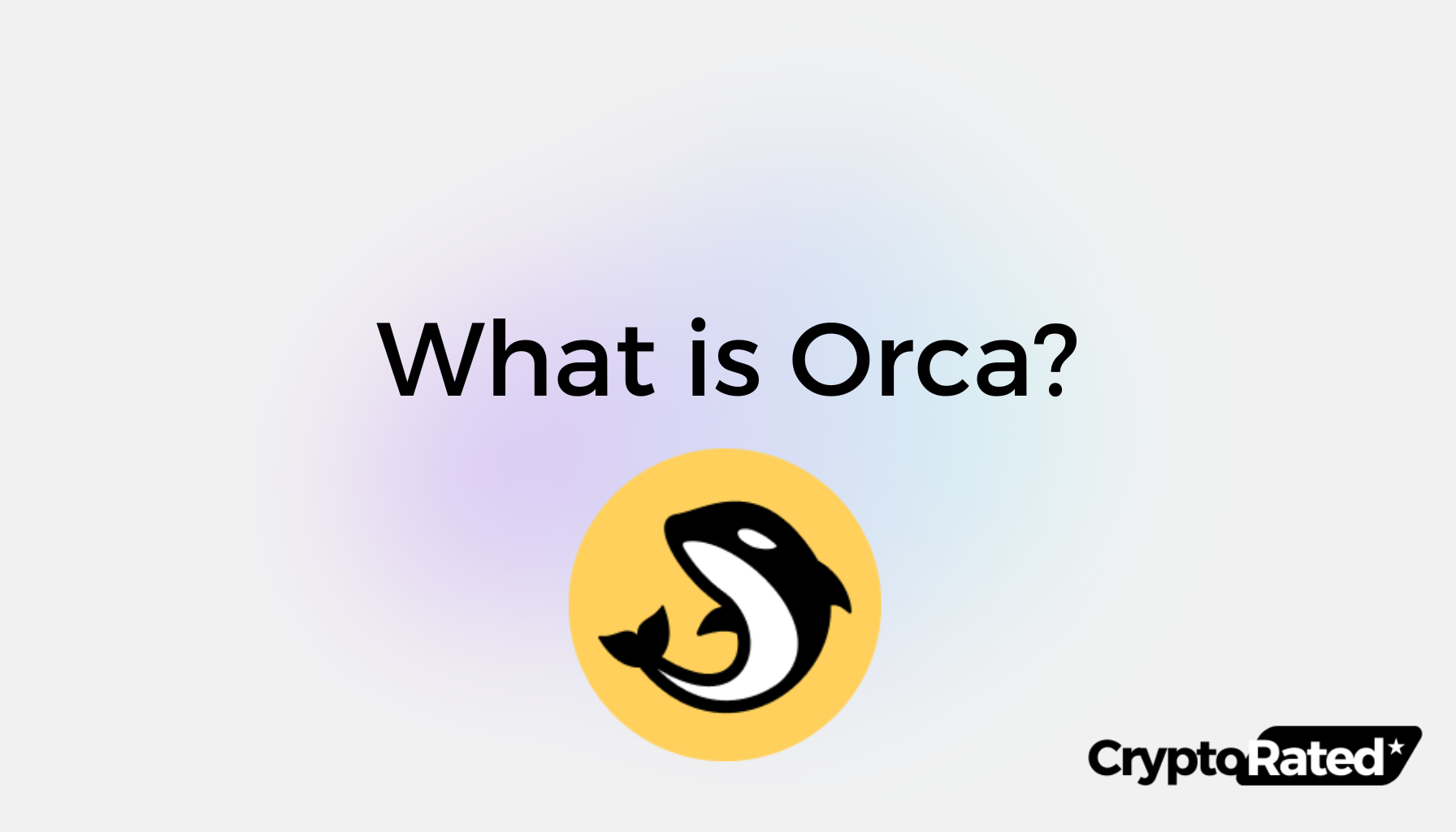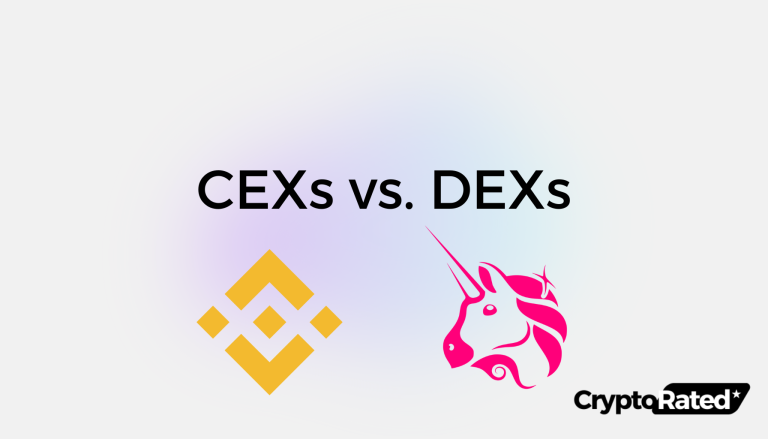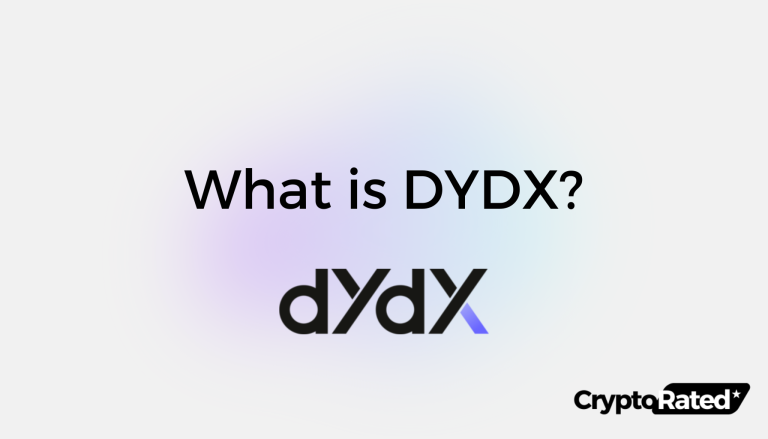
What is Orca (ORCA)?
Orca is an open-source Decentralized Exchange (DEX) on Solana that runs using a Concentrated Liquidity Automated Market Maker (CLAMM). Orca’s founders, Grace “Ori” Kwan and Yutaro Mori, created the protocol from their desks in Tokyo, Japan in 2021. Orca was the third app to launch on the Solana blockchain1, and as of late January 2024, was listed as the top DEX within the ecosystem, with a Total Value Locked (TVL) of $164.4 million2.
The DEX goes by the tagline ‘DeFi for people, not programs’. It positions itself as the “most user-friendly concentrated liquidity AMM” within the Solana ecosystem; aiming to provide users with unparalleled efficiency, the most intuitive UX among concentrated liquidity providers in DeFi, and trading made easy3.
Governance decisions about the DEX are made through the Orca Decentralized Autonomous Organization (DAO). The $ORCA token was released in 2021 as part of a plan to progressively decentralize the protocol, turning decision-making processes over to the community4.
Orca boasts a vibrant community that goes by the moniker ‘Orcanauts’. In 2021, the DEX released a 10,000-piece generative art NFT project by the same name.
Key Takeaways
1. Orca is the leading Decentralized Exchange (DEX) on Solana with a Total Value Locked (TVL) of $164.4 million (as of January 23rd, 2024).
2. Positioned as the “most user-friendly concentrated liquidity AMM” on Solana, Orca prioritizes providing users with efficiency, an intuitive UX, and easy trading.
3. Governance decisions for Orca are made through the Orca DAO, empowering the community to have a say in the protocol’s future.
4. The $ORCA token was released in 2021 as part of a plan to transition Orca’s control to the community, aligning incentives among developers, liquidity providers, and traders.
What Is The History of Orca?
When Orca first launched in February 2021, its founders went by the pseudonyms Ori and YM. Later that year, the pair decided to doxx themselves – revealing their real identities – as Grace Kwan and Yutaro Mori respectively. A Stanford graduate and UX designer, Grace “Ori” Kwan is the brains behind Orca’s UX, while Yutaro Mori, an Ethereum Foundation alumnus, is the architect of Orca’s core AMM, bringing a focus on scalability and durability. The protocol takes its name from the childhood obsession of one of the founders: killer whales.
Ori and Yutaro have revealed that they first began building on Ethereum but soon ran into limitations around transaction speeds and gas fees. Their mission to make DeFi accessible to everyone, and not just crypto’s “power players”, those who have accumulated wealth and knowledge through long-term involvement in the space, drove their decision to build a DEX on Solana that centers ease of use5.
Rather than launching the protocol and token together, Orca launched the $ORCA governance token in August 20216. The token was retroactively distributed to participants who had engaged with the protocol by providing liquidity or trading7. Orca’s strategic launch of the ORCA governance token, six months post-DEX inception, reflects a deliberate move towards progressive decentralization. Notably, retroactive token distribution among community members, the team, and advisors, as well as reinvestment into growth underscore Orca’s commitment to inclusivity and sustainable development.
Although neither of the founders had previous experience running a start-up and didn’t have the backing of VCs when they launched, Orca went on to raise $18m in a Series-A funding round in -September 2021. The Series-A was led by Polychain, Placeholder and the now-defunct Three Arrows Capital, with Coinbase Ventures, Jump Capital, Sino Global Capital and Solana Capital also contributing8.
9.6% of the coin’s market cap was reserved for a private token sale9. The absence of a public sale aligns with a cautious approach, emphasizing responsible token distribution and fostering a robust decentralized ecosystem for the long term.
As one of the first dApps to launch on the Solana blockchain. At the time, Orca’s pools were handling approximately 50% of the daily trading volume on the Solana blockchain, solidifying its position as one of the pioneering dApps on the platform10.
While the diversity of dApps on the Solana ecosystem continues to proliferate, Orca has successfully maintained its first-mover advantage. As of late January 2024, the CLAMM-based DEX occupies the top spot in the Solana DEX charts based on TVL11.
Orca has received the seal of approval of Solana’s CEO and founder, Anatoly Yakovenko, who commented “We’ve been continually impressed by the technical, design, and industry expertise of the Orca team.12”
What Can I Do On Orca? Main Features
Orca’s USP can be summed up in its “human-centered UI”. One of the pioneering decentralized exchanges (DEXes) on the Solana blockchain, whether you’re a trader, farmer, liquidity provider, asset lister, or builder, Orca offers an intuitive UX and efficient platform for a range of DeFi needs.
Orca’s main use cases are trading, liquidity providing and farming:
Trading
Orca’s trading platform is designed to make exchanging a broad spectrum of fungible tokens easy on the Solana blockchain. Users can expect competitive rates, courtesy of concentrated liquidity, coupled with nominal fees (often less than $0.01) and swift transaction speeds—typically within seconds.
The inclusion of the Fair Price Indicator and the capital efficiency inherent in Orca’s CLAMM pools ensures a trading experience characterized by confidence and minimal slippage.
Yield Farming
For those looking to engage in yield farming, Orca presents a robust ecosystem. Participants can earn fees from a substantial daily trade volume, optimize capital efficiency through Whirlpools (the platform’s concentrated liquidity product), and explore Double-Dip pools offering multiple token types as incentives for enhanced yield farming.
Concentrated Liquidity Pools
Orca’s Concentrated Liquidity Pools provide users with the opportunity to achieve higher capital efficiency by concentrating liquidity within specific price ranges.
Whirlpools provide higher fees and incentives compared with conventional pools – but they also come with increased risk of Divergence Loss (Impermanent Loss). .
Liquidity Terminal
Launched in November 2023 and currently in closed beta, Orca’s Liquidity Terminal introduces a paradigm shift in liquidity provision.
Liquidity Providers (LPs) can now conduct backtesting using the Yieldfinder, analyzing past performance to identify missed opportunities and set intentional ranges. The inclusion of custom slippage tolerance, a community-suggested feature, enhances user control over liquidity provision.
Community Engagement
Orca emphasizes community involvement by allowing users to create their own pools through a user-friendly interface. Liquidity providers, asset listers, and builders can contribute to shaping the decentralized landscape on Solana, leveraging Orca’s efficient source of liquidity and double-audited, open-source smart contracts.
Security Measures
Orca places a strong emphasis on security, with a double audit and a bug bounty program in place to maintain a spotless security record, safeguarding user funds and transactions.
Decentralization with Convenience
Orca aims to balance decentralization with user-friendly features, collaborating with Stripe to facilitate fiat purchases through the UI, thereby lowering the barriers of onramps to attract a broader user base.
In summary, with a front-end in Next.js, a custom Smart Router, faster confirmation times, dynamic priority fees, and price comparison tools, Orca strives to provide a secure and cutting-edge DeFi experience for its users. This comprehensive overview invites users to explore the Orca ecosystem and navigate the decentralized financial landscape with a deeper understanding of its features and functionalities.
What are the tokenomics Of $ORCA?
The $ORCA token, issued on August 9, 2021, operates on the Solana blockchain with a total supply of 100 million tokens and an initial circulating supply of 5.25 million13. The tokenomics involve various allocations, including a retroactive distribution to liquidity providers and traders.
Liquidity providers received 4 million ORCA, with distribution based on the total USD value of provided liquidity.
Average traders and heavy traders received 500,000 ORCA each, evenly distributed among all participants within those categories. Advisors, specifically e^{i} ventures, were allocated 250,000 ORCA for early liquidity sourcing.
Team and advisors hold 20%, private sale participants hold 9.6%, and 4.3% is allocated to Value Add + Advisory (Orca’s growth arm}.
All these allocations come with a 3-year vesting schedule and a 1-year cliff or lockup.
In 2022, ORCA token holders formed a DAO Governance Council, and in Q1 2023, the council allocated 5 million ORCA tokens for a Contributor Grant to attract talent on Solana.
Undistributed ORCA tokens are allocated for Community & Governance Initiatives, Contributor Grant, and Team, Private Sale, and Value-Add + Advisory.
ORCA tokens can also be distributed as rewards on certain trading pairs that aim to incentivize liquidity.
A private token sale took place in September 2021, with a one-year cliff and a two-year linear vest for investors.
The Orca Treasury, funded by accumulated fees, supports the protocol’s development, token supply management, and long-term health.
The Climate Fund, funded by a fee on trades, contributes to environmental causes. The first donation of $550,000 went to Ocean Conservancy in November 2022. The Climate Fund tokens will be converted to stablecoins quarterly, and community suggestions for future recipients are encouraged.
Orca emphasizes transparency by disclosing relevant wallet addresses for the Treasury and Climate Fund, promoting an open approach to its tokenomics.
How is Orca continuing to innovate? What’s new?
The team, with the input of the decentralized community, at Orca and Orca DAO continue to push the boundaries of DeFi in a bid to help onboard crypto’s next ‘billion users’. Here is a brief overview of some of the latest developments to emerge from Orca:
Within the first seven days of 2024, Orca announced a collaboration with SoBit, bridging infrastructure that connects BRC20 to Solana14. This capability allows Orca users to seamlessly engage with Bitcoin-based assets on the Solana blockchain, opening up a broader range of trading and investment opportunities.
By bridging these two ecosystems, Orca not only caters to the diverse preferences of its user base but also contributes to the overall liquidity and utility of the platform.
Wrapping up last year on a high, Ori and Yutaro unveiled Orca’s innovative Liquidity Terminal during the Solana Breakpoint Conference in November 202315. The tooling marks a significant leap forward in empowering LPs with data-driven precision. Tackling the challenge of scattered historical data across sources, this terminal consolidates crucial information for LPs, including a candlestick price chart, liquidity depth chart, and token details such as price, market cap, and supply.
But what really sets it apart are entirely new features like the Yieldfinder, which offers a historic fee yield chart, and the Time to Profit (TTP) Simulator, predicting profitability while calculating for divergence loss.
The Liquidity Terminal not only enhances decision-making but also facilitates easy backtesting and scenario analysis. Currently, in a closed beta, this tool exemplifies Orca’s commitment to refining DeFi experiences through innovative solutions.
Finally, leaning into DeFi’s composability, earlier innovations include integrations with Jupiter and Stripe. Such integrations allow users, in the case of Jupiter, to compare prices through a price comparison tool and make the best decision on where to trade. With Stripe integrated, users can purchase fiat directly from within Orca, without needing to rely on Centralized exchanges.
From graduating from AMM to CLAMM, introducing Whirlpools, and more recent innovations, such as composable integrations, and new BRC-20 bridging capabilities, the team at Orca are always looking for ways to improve the user experience and bring more people into the permissionless world of DeFi on Solana.
How Do Orca and Raydium Compare?
Raydium, another DEX on the Solana blockchain, has the second largest TVL at $132.28m as of January 23rd 202416. How do they differ? In the following table, we break down how the two DEXes compare:
| Feature | Orca | Raydium |
|---|---|---|
| Token | ORCA | RAY |
| Launch Date | August 9, 2021 | February 21, 2021 |
| Total Value Locked (TVL) | $164.4 million | $132.28m |
| Liquidity Mechanism | Concentrated Liquidity AMM (CLAMM) | AMM and Order Book Hybrid |
| Special Features | Emphasizes user-friendliness and efficiency, Orca Climate Fund | Ficus on lightning-fast trades, shared liquidity and new features for earning yield. |
Final Thoughts on Orca
Orca has established itself as a pioneering decentralized exchange (DEX) on the Solana blockchain. Positioning itself as the most user-friendly concentrated liquidity automated market maker (AMM), Orca aims to make DeFi accessible for everyone through an intuitive user experience and easy trading.
As the leading DEX on Solana, with a total value locked of $164.4 million (as of January 23rd 2024), Orca occupies the top spot among Solana DEXs. The protocol’s co-founders, Grace “Ori” Kwan and Yutaro Mori, leveraged their respective expertise in UX design and core AMM architecture to create a platform that prioritizes scalability, durability and ease of use.
Orca offers a range of use cases, including trading, yield farming and providing liquidity. Key features include Whirlpools for concentrated liquidity, a Liquidity Terminal for data-driven precision, and composable integrations with platforms like Jupiter for price comparison.
The protocol has taken a measured approach to decentralization, first launching the DEX in 2021, followed by the $ORCA governance token for progressive decentralization. Orca established an ecosystem alignment model, with token allocations to reward early participants.
Recent developments demonstrate Orca’s commitment to continuous innovation, like the Liquidity Terminal and collaboration with SoBit for BRC-20 bridging. Orca also has an active DAO and emphasizes community involvement.
With a focus on security, transparency around tokenomics, and balancing decentralization with convenience, Orca aims to shape the future landscape of DeFi. The team continues pushing boundaries to onboard crypto’s next billion users through human-centered design.
Frequently Asked Questions
Which regions Is Orca available in?
DeFi is celebrated as permissionless and available to anyone with an internet connection. However, Orca has restricted users in certain geographies. Owing to concerns over compliance, Orca has no longer been available to users in either the US or the UK as of March 31st, 2023, and October 2023 respectively.
What is a CLAMM and what are whirlpools?
Whirlpools are Orca’s next-gen AMM (Automated Market Maker) introducing concentrated liquidity (a Concentrated Liquidity Market Maker, or CLAMM) to enhance LP yields and reduce slippage.
Unlike traditional constant product AMMs, Whirlpools allow LPs to focus liquidity in specific price ranges, optimizing capital efficiency.
Launched in Q1 2022, these include SOL/USDC, ORCA/USDC, and mSOL/USDC. The unique smart contract is audited, open-sourced, and supports Orca’s belief that concentrated liquidity will dominate DeFi trading. Whirlpools operate efficiently even during Solana network slowdowns, aligning with Orca’s commitment to resilient and capital-efficient decentralized markets.
What is the Orcanauts NFT project?
The Orcanauts NFT project is a community-driven initiative by Orca, introducing generative art NFT characters inspired by successful projects like Cryptopunks and Solana Monkey Business.
Orcanauts offers a chance to adopt exclusive NFTs, contributing to an Orcanautical Community with dedicated Discord channels.
The project involves phases, including community engagement, live chats with the Orca team, and a sponsored Orcanautical Gallery featuring artist-created works.
The long-term vision, known as Phase X, aims to build the Orcaverse by exploring NFT-DeFi intersections.
The project is led by artist Cori Huang, and 75% of mint revenue is donated to a nonprofit promoting global financial literacy education, emphasizing Orca’s commitment to meaningful contributions beyond the crypto space.
What other projects does Orca raise money for?
Orca raises money for environmental causes through the Orca Climate Fund. The fund collects fees from trades, and the community participates in a “proto-governance” vote to choose recipients.
Ocean Conservancy received the first donation of $550,000 in November 2022. Orca collaborates with Ocean Conservancy to determine impactful initiatives.
Funds are converted to USDC for smoother donations, and future contributions will be in stablecoins. The community can suggest values-aligned charities for consideration in the Orca Discord.

WRITTEN
Mariquita de Boissière
Through storytelling and detailed research, Mariquita connects the brightest developer talent and most motivated community members to web3 changemakers. From contributing top-of-funnel educational content for web3 onboarding projects like Surge.io to collaborating with Hedera’s HBAR Foundation on content marketing strategy, Mariquita has worked with some of the top artists, founders and builders in the space.




